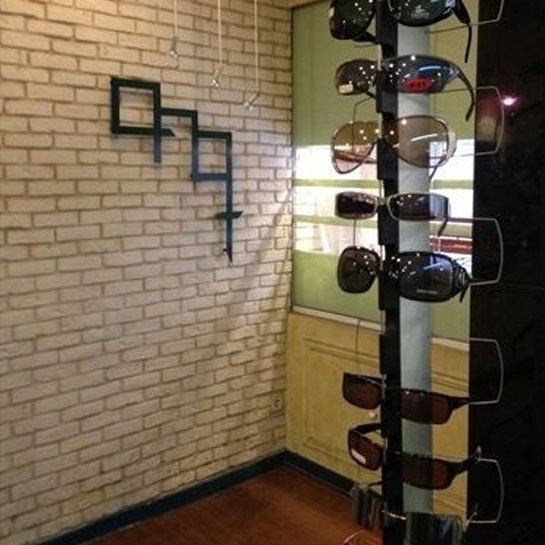Placing a coating with plaster tiles is much simpler, convenient and practical than it may seem at first glance. In fact, it has become one of the preferred options for users when renovating their home. We are convinced that, if you have come this far, it is because you are interested in using plaster tiles in your next project. In ParaTuReforma we are going to explain everything you should know about them. Pay attention.
Installing gypsum tiles: advantages
Gypsum and plaster have a series of unquestionable advantages in the construction sector. Not in vain, they are materials that have been widely used in Spain since the 1970s. However, when they are presented in the form of platelets, their benefits are multiplied. Especially when it comes to covering walls and ceilings.
But what are they exactly? Let’s take a look:
- Easy, fast and clean installation. The installation of a gypsum board does not require a foundation, but is carried out dry. Therefore, very little dust and dirt is generated during the process. The metal profiles used are screwed together, which makes the installation look like a puzzle that is very easy to solve.
- High insulation capacity. Gypsum is a fireproof material to which, in addition, it is possible to add benefits against humidity and mold. It allows the installation of thermal and acoustic insulating elements to enjoy a soundproof house and in which it is easier to reach the comfort temperature.
- Versatility in designs. The plasticity of plaster allows you to obtain fantastic finishes, even when drawing curves on the walls. Undoubtedly, it is a material that will allow you to give free rein to your creativity.
- Economical and lightweight. Gypsum is a much cheaper building material than concrete and brick, for example. Because it weighs so little and has such a simple installation process, the overall cost is greatly reduced. In fact, if you have the right tools, you can do it yourself.
All these advantages minimize the only drawback that can be put to a coating with gypsum tiles. We are talking, in particular, about its low resistance to shocks. However, it is a material that can be repaired quite easily.
Tools
As we have just said, the installation of plaster tiles in the home is quite simple and requires tools that, to a greater or lesser extent, all DIY enthusiasts have at home. Specifically, you will need:
- Pencil and brush.
- Spirit level and leveling ruler.
- Tape measure and flexometer.
- Cutter.
- Jig saw and crown saw.
- Battery-powered screwdriver and a set of bits.
- Hammer drill and a set of drill bits.
- Sheet metal shears.
- Drilling pliers.
- Sandpaper or electric sander.
- Spatula and trowel.
- Staircase.
In order to carry out the task without risk, we recommend that you wear a mask, eye protection goggles, gloves and safety footwear.
Materials
Obviously, the indispensable elements are laminated plasterboard or fiber-plasterboard, which are the two most common alternatives on the market. Once you have them, you will have to assemble them as well:
- Wooden or, preferably, steel profiles.
- Specific screws for gypsum boards.
- Self-leveling mortar.
- Acoustic sealing tape for plaster.
- Thermal insulation material.
- Putty for plaster joints.
- Adhesion primer.
Steps
At this point, it’s time to get down to work and place the plaster tiles on your walls or ceilings. This step-by-step guide will be very useful for you.
Preparation of the process
The first phase of the process is to prepare everything. To do this, you need to accurately measure the entire work. We recommend that you make a sketch on paper with the exact dimensions.
Next, place the material in a location that is accessible to you. If you want to protect the floor, remember to put newspaper or some other type of covering on it so that it doesn’t get dirty, scratched when using the ladder or damaged if you drop a tool.

Upright profiles
Now it’s time to get out your sheet metal shears and put them to use. Keep in mind that the floor profiles (UW) are different from the vertical studs (CW or DB, depending on the level of sound insulation you need). Based on the measurements you took earlier, shape them correctly.
Anchoring
At this point, place the lower profiles on the floor and make a mark in each hole where an anchor screw will go. Then remove the profile and, using the hammer drill, drill the holes.
Put the dowels in, reposition the profiles and, this time, fasten them firmly with the screws. To give you an idea, you will need approximately 3 fixing points for every meter of wall.
Frame assembly
Once the profiles are anchored to the floor, place the frames on them. To do this, you will need the help of the drilling pliers and the screws for uprights. If necessary, you can cut them out with the sheet metal shears. It is not complicated at all.
Laying of boards and insulation
Now it’s time to put the plaster tiles in their corresponding frames. To fix them properly, all you will need are the plaster screws. Before closing the wall, put the thermal and acoustic insulation element you have purchased.
Electrical installation
Before finishing, run the wires for the electrical wiring you need. Next, use the hole saw to cut the holes for the electrical sockets and switches.
Joint caulking and wall sanding
The last phase of the process consists of caulking the joints so that they are hidden. Do the same with the heads of the screws that are visible. If any irregularities are detected, rub with sandpaper until a completely smooth finish is achieved.
This is all you need to do to install a coating with plaster tiles! If you have any questions or want to ask for a quote, please contact ParaTuReforma.


